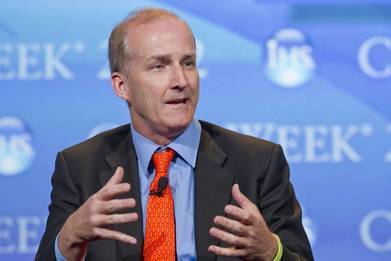 New York Governor Andrew Cuomo has directed the state’s department of public service to enact a new clean energy standard that calls for half of the electricity consumed in the state to come from clean and renewable resources. Under the Reforming the Energy Vision proceeding, New York already had a goal of 50 percent renewables by 2030, but the Department of Public Service will now codify that goal. “By mandating a Clean Energy Standard, we ensure that this goal is converted from aspirational to actionable,” Cuomo wrote in the letter to the commission. The regulators will have to develop the standard by June 2016. The state’s 2015 Energy Plan already calls for cutting carbon emissions 40 percent by 2030. New York gets more than 10 percent of its electricity capacity from hydro. Pumped storage and wind each account for about 4 percent of capacity as well. As a percentage of electricity consumption, however, renewables and hydro account for about 25 percent. New York is now in elite company in terms of RPS requirements. Earlier this year, California raised its RPS from 33 percent to 50 percent, Hawaii mandated 100 percent renewables by 2045, and Vermont passed a bill for 75 percent renewables by 2032. But New York has a unique RPS operating model. Instead of each investor-owned utility being responsible for procuring renewables, utilities collect an RPS charge from customers, which go to a fund run by New York State Energy Research and Development Authority (NYSERDA).
White PapersThe New Face of Damage AssessmentDOWNLOAD NOWExecutive Briefing: The Future of U.S. SolarDOWNLOAD NOWNYSERDA then administers the RPS program through small- and large-scale projects. The large-scale portion of the program has had 10 solicitations that have contracted about 2 gigawatts of power. New York is also unique in that the new RPS should be increasingly achievable under the Reforming the Energy Vision proceeding. The regulatory overhaul seeks to eliminate electricity peaks in the New York, spur customer demand for distributed, clean energy solutions, and transform the distribution utilities into clean energy platform providers. By right-sizing the power system and eliminating peaks, fewer fossil-fuel peaker plants will be needed. Additionally, utilities will be asked to slash the nearly 9 percent in losses on the transmission and distribution systems, which will further drive down generation needs. Cuomo also asked the commission on Wednesday to develop a process to prevent the premature retirement of upstate nuclear plants during the transition to more renewables. Nuclear energy accounts for 14 percent of electricity production in New York and has emerged as a messy battleground for Cuomo. He has called repeatedly for the closing of Entergy’s Indian Point plant, while trying to block the closure of upstate plants that are losing money in wholesale markets. As cheap natural gas and increasingly cost-effective renewables come on the system, nuclear energy is having trouble competing. Cuomo said in his letter to the commission that closing upstate nuclear plants “would eviscerate the emission reductions achieved through the state’s renewable energy programs.” As of now, it’s unclear what measures the commission may adopt to keep the plants open. To encourage faster development of its solar market, New York recentlylifted its net metering cap, and the state’s Green Bank and Green Jobs-Green New York program continue to invest in solar. Next June will be a busy month for the New York regulators, as the utilities are also expected to file their distributed system implementation plans that month.
1 Comment
 NRG Energy Inc.’s high-profile chief executive stepped down on Thursday in the face of investor unhappiness over his investments in renewable energy and this year’s 59% drop in the power-generation company’s share price. CEO David Crane, a Harvard-trained lawyer and onetime investment banker who led NRG for a dozen years, resigned effective immediately and was succeeded by the company’s chief operating officer, Mauricio Gutierrez. “My sense is that over the course of my business life I probably have talked too much and this might be a good time to err on the side of speaking too little,” Mr. Crane wrote in an email, declining to comment further on his departure. The Princeton, N.J.-based company is one of a dwindling number of merchant power companies that sell electricity to utilities. Mr. Crane, 56 years old, was the architect of its bold strategy to greatly expand NRG’s fleet of gas- and coal-burning power plants and build a presence in solar and wind power. AdvertisementBut a billion-dollar investment in renewable energy failed to generate the profits that Mr. Crane had anticipated and became a drag on earnings and the company’s stock, which ended 2014 at $26.95. It closed at $10.97 a share in 4 p.m. composite trading on the New York Stock Exchange on Thursday. In September, Mr. Crane announced a new strategy to split off NRG’s renewable-energy enterprises, including a residential rooftop solar business, and find investors willing to sustain them until they become profitable. In an interview that month with The Wall Street Journal, he said he expected the unit, which he called GreenCo, to be created and capitalized by the middle of 2016. His abrupt departure raises questions about whether that split will occur. An NRG spokeswoman said the company would have no comment beyond its disclosure of the management change. Mr. Crane has agreed to assist in the transition through month’s end, NRG said. Analysts have said NRG should have moved earlier to hive off its money-losing enterprises and focus its attention on wholesale power and on selling electricity through a retail arm. Its consumer business has about three million retail customers. “It has been a tough time for merchant power in general and NRG got pushback on the new strategy,” said Ali Agha, a SunTrust Banks Inc. analyst. But, he said, what likely drove Mr. Crane’s departure was “the hit to the stock price.” In an interview two months ago with the Journal, Mr. Crane said the company’s directors hadn’t talked to him about leaving. “The board has been very supportive,” he said. “They want to see the plan implemented and they believe I’m the best one to implement it.” But he also acknowledged “there are at least two sets of people above my pay grade—shareholders and the board of directors,” who would decide who was most capable of leading the company. Like many other companies, NRG failed to predict the price of natural gas would tumble to about $2 a million British Thermal Units this year, a collapse that reduced wholesale power prices and cut NRG’s revenues. The company lost roughly $78 million on revenue of $11.6 billion in its first three quarters this year. This week, NRG said it would sell two plants—a coal-fired plant in Pennsylvania and a natural-gas plant in Illinois—for $138 million combined, a fraction of what it would cost to build them. NRG said the cost of maintaining the plants would outweigh their contributions to earnings. Mr. Crane had told the Journal earlier that investors made clear they would rather have had profits from the power-generation business returned to them through dividends and stock buybacks and not poured into the fledgling clean-energy enterprises. “We’ve been willing to try new things and have an appetite for risk,” said Mr. Crane in October. But, he added, “We have to be mindful that industry logic and investor logic do not always coincide.” 2015
Here's the collection from previous years. 2009 to 2010 Bankrupt, closed, acquired
2011Bankrupt, closed
2012 Bankrupt, closed
2013Bankrupt, closed
|
James Ramos,BPII'm your go to solar energy expert here to guide you step-by-step through all of your solar options. Categories |
James The Solar Energy Expert

 RSS Feed
RSS Feed
